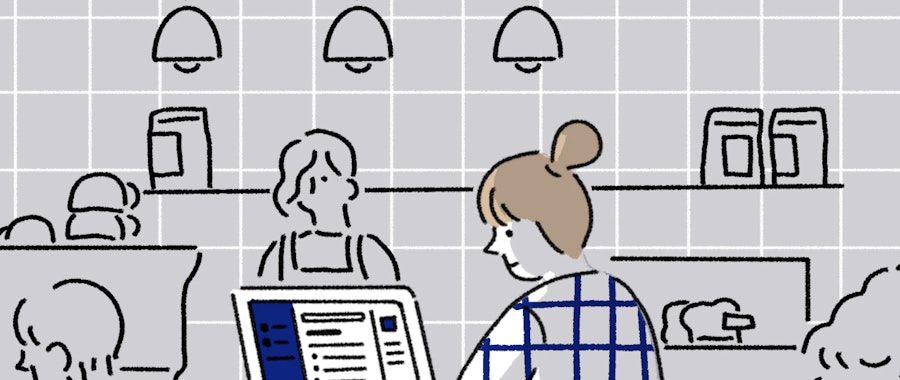
Australia can build a culture of employee-led innovation
Australia has always had a reputation for workplace innovation and putting the needs of workers first. Australia was the first to introduce a liveable minimum wage in 1907, a policy that was duplicated the world over. Beyond that, in 1856 a group of stonemasons from Melbourne lobbied for the 8 Hour Day Campaign, resulting in a work-life balance formula adopted by workforces around the world: 8 hours of work, 8 hours of leisure and 8 hours of rest.
Now Australia is finding itself in an unprecedented position again; while other parts of the world are still in the middle of the COVID-19 outbreak, it falls to our region to be some of the first to lay the groundwork for a post-COVID world.
And even while we’re still on the road to recovery, with lockdowns and second waves all over the news, we’re able to take this opportunity to improve our ways of working for the better.
In the first part of our series, we spoke to James Dellow about the technology and physical spaces behind Australian businesses tackling COVID-19. To read that story, click here. In this second part, we’re speaking with Dr Joseph Sweeney about why it falls to individuals to always look at improving their work in a post-COVID world.
Joe Sweeney, Advisor on The Future of Work at IBRS, spoke about how knowledge work in Australia should learn from the industrial and manufacturing industries, that in order to succeed we need to build a culture of innovation that empowers employees to point out the inefficiencies and improvements in their job.
“In the 1970s, there was this notion of continuous workplace improvement in the production and manufacturing industry. That it's the role of every worker to look at their job, the tools they've got, the processes and say - How can this be better? We never applied that to the knowledge industry.” This is similar to the japanese concept of Kaizen, to reflect and identify problems before solving them in increments.
“These are small ideas, in manufacturing it's small changes: for example, replacing a flathead screw for the philips head screw on a design to make it better.” The challenge for businesses is in empowering employees to make these continual, small recommendations, then looking at the bigger picture and mapping out how it affects the wider company.
“You've got to be able to find a way of taking those ideas, and understanding which of two competing ideas from two very smart staff members is going to be the better for us in this situation. If you have to iterate and try something different - there's no harm in that.”
This focus creating a better normal can help businesses to react to challenges and changing work environments more efficiently, and understand how the changes will affect the end business outcome.
“It is the role of every staff member to look at their job and look at the organisation and say, ‘We could do this better, easier, faster, and this is why’”.
“It is the role of every staff member to look at their job and look at the organisation and say, ‘We could do this better, easier, faster, and this is why’”.
Let your teams innovate on their workflows
When you’re working in a top-down environment, all of the decision making funnels down from the leadership, but that isn’t efficient as the leaders can become bottlenecks. Australian businesses have an opportunity to double down on collaboration, and create a culture that rewards innovation.
Joe said, “work gets done when multiple people are tackling one problem together. I’d liken this to a pitstop on an F1 racetrack - when a car rolls in, the work doesn’t fall to one person to undo every bolt and take off every tyre. Tasks are divided the roles and responsibilities and tackled it together simultaneously.”
As businesses have adapted to teams working remotely, they’ve seen the effect that’s had on workflows and how it’s led to teams tackling larger, more complex tasks with ease.
“What many organisations have discovered is that the quality of work improves when employees manage their own workflow - but the quantity of work that's being produced in the traditional measures like number of words, number of pages number of interactions actually falls slightly,” said Joe, “but the ones which are falling off are the ones which maybe weren't adding a lot of value to the organisation.”
This new way of working is highlighting the pieces of workflow that were only really there for oversight, the check-ins or the planning meetings that were actually redundant in the grand scheme of things can be replaced with deep work that is valuable to the business.
Dr Joe Sweeney spoke to us about how in reopening businesses in a post-COVID world, the opportunities for collaboration, creativity and innovation are huge. Businesses have an opportunity to put more trust in their employees to change the way they’re working, focus on the most valuable pieces of work, and be invested in how they’re working.
Keep an eye out over the next two weeks for our final part in this series - speaking to Melis Senova of Huddle about the leadership and management challenges that come from COVID-19.
If you have any questions about this or another of our stories, email drop-everything@dropbox.com.